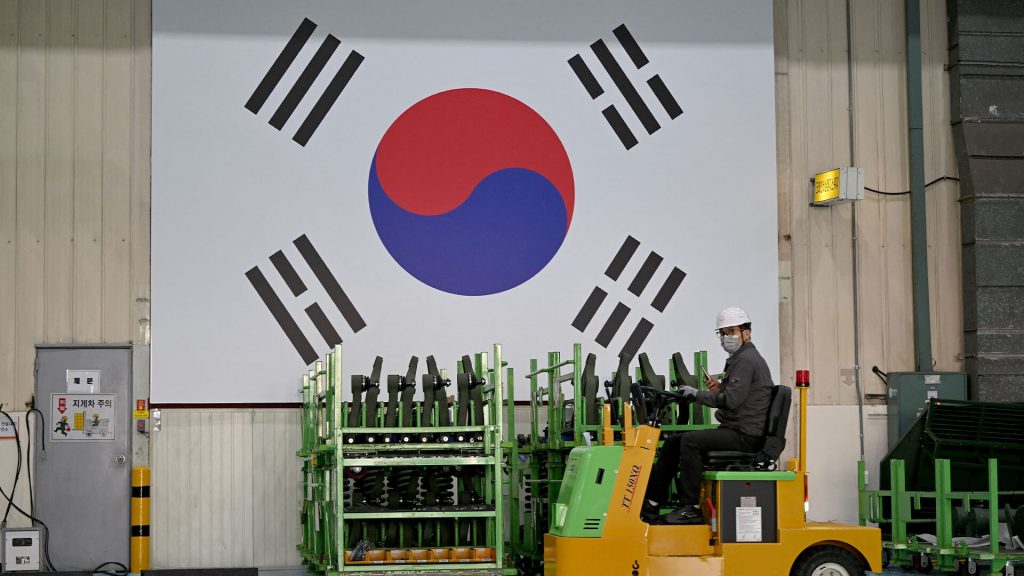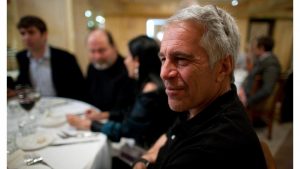From howitzers to shipyards, South Korean firm expands role in US defense

The Radford Army Ammunition Plant in Virginia is one of only six sites in the United States that produce explosives and propellants for the U.S. Army. Built in the 1940s, it’s showing its age.
“It’s very old, and the systems and equipment process are essentially outdated,” said Jeff Brunozzi, President of Global Ordnance, a U.S. defense contractor that supplies and sources critical components for the military. “They’re not to the newest technology and standards.”
When Russia invaded Ukraine, the limitations of America’s munitions infrastructure became impossible to ignore. While Ukrainian and Russian forces fired about 10,000 artillery rounds daily in the early stages of the war, the U.S. was producing roughly that number each month.
That production gap drove the U.S. government — first under former President Joe Biden and now under President Donald Trump — to pour billions into modernizing its defense industrial base. Not wanting to “reinvent the wheel,” many American companies are increasingly turning to their counterparts in allied nations for help as well.
As the Pentagon pushes to modernize its manufacturing and logistics backbone, South Korea is emerging as one of America’s most capable and committed partners. From munitions and propellants to shipbuilding and autonomous systems, South Korean defense companies, such as Hanwha, are positioning themselves to play major roles in the next generation of U.S. military readiness.
A strategic alliance: GMP and Hanwha
Global Military Products, a wholly-owned subsidiary of Global Ordnance, recently announced a partnership with Hanwha Defense USA, the American subsidiary of South Korea’s defense giant Hanwha. Together, they are competing to become the next operators of the Radford plant, a contract currently held by BAE Systems, which is worth billions of dollars.
Brunozzi said Hanwha’s decades of experience and automation expertise could revolutionize how the U.S. produces explosives and propellants.
Unbiased. Straight Facts.TM
While Ukrainian and Russian forces each fired about 10,000 artillery rounds daily in the early stages of the war, the U.S. was producing roughly that number each month.
“They’ve automated those chemical processes, both making it safer and making it more efficient,” Brunozzi said. “One of the things we’d be looking to do is bring those technologies to Radford to produce current and next-generation propellants using advanced technology that they’ve already developed.”
Hanwha already has a contract with BAE to modernize one facility at Radford. But Brunozzi says that if his team won the contract, the deal would include Hanwha bringing its industry-leading automation infrastructure to the project, evolving the operation’s efficiency and safety.
That, in turn, will enable the manufacture of more advanced energetics at Radford. Currently, one of America’s most advanced artillery propellants isn’t made in the U.S., but at a General Dynamics plant in Canada — because Radford’s technology can’t produce it efficiently. Global Ordnance and Hanwha aim to change that.
A Defense Blog article described the partnership as part of a “broader strategy to address critical gaps through public-private investment and long-term industrial collaboration,” emphasizing that the effort “represents a significant step toward strengthening the domestic defense industrial base.”
Hanwha’s American operations are led by Mike Smith, a U.S. Navy veteran and defense executive with 20 years of leadership experience in the U.S. defense industrial base. Smith said South Korea’s defense sector developed under the constant threat of attack from the North, and that shaped how its companies operate.
The ‘Industrial Warrior Ethos’
“Since the ‘50s, Korea has long been a natural ally of the U.S.,” Smith said. “When you have a pretty unpredictable neighbor to the north, it really forces and focuses a country and an economy on the ability to execute with certainty.”
He described Hanwha’s approach as an “industrial warrior ethos.”
“When you’re on a wartime footing 24-7-365, you better deliver today, because I might be shooting it tonight,” Smith said. “In terms of cost, it better fall into my cost envelope because I have a fixed budget. And in terms of performance, it just better perform as advertised because we’re all relying upon this.”
That mindset has translated into results. In the past two years, Hanwha signed numerous contracts with American companies. General Atomics and Hanwha agreed to codevelop the Gray Eagle unmanned aerial system. Hanwha is also working with BlueSpace AI to expand autonomous software for the Defense Department. Smith said the company is pitching its self-propelled howitzer as a replacement for the Army’s current artillery platform.
Expanding into US shipbuilding
Hanwha’s ambitions in America don’t stop with ammunition. The company invested $5 billion into its newly acquired Philly Shipyard — now renamed Hanwha Philly Shipyard — on the Delaware River.
According to USNI News, Hanwha tapped retired Rear Adm. Tom Anderson, formerly the Navy’s program executive officer for ships, to lead its American shipbuilding operations. Anderson will oversee both military and commercial ship programs, as well as infrastructure expansion to meet future demand.
Smith said the goal is to “create the benefits of being a commercial yard that also has the capacity to produce naval vessels,” whether they are uncrewed, auxiliary or modular ships supporting existing programs like the Columbia or Virginia-class submarines.
National security and economic teamwork
For national security experts like Irina Tsukerman, president of Scarab Rising, the U.S.–South Korea partnership represents more than just business.
“This partnership obviously began as a fairly conventional alliance based on shared deterrence on the Korean Peninsula against common threats, including specifically North Korea and, later on, also China,” Tsukerman said. “But now it’s evolving into an almost commercial cooperation and certainly an industrial partnership.”
Tsukerman added that the cooperation is especially relevant in the context of the growing “CRINK alliance” — China, Russia, Iran and North Korea — and represents a deepening of “coproduction value” between Seoul and Washington.
The alliance is reciprocal. While South Korea continues to invest heavily in U.S. defense ventures, Trump recently pledged the U.S. will share nuclear submarine technology with Seoul. It’s a level of trust and cooperation rarely extended to foreign nations.
Reinforcing the ‘arsenal of democracy’
As America works to revitalize its defense industrial base, partnerships like those between Hanwha and GMP could be critical in ensuring that the U.S. military remains ready for the challenges ahead.
In addition to adding capacity, innovation in the U.S. defense industrial base will ensure that American servicemembers have access to the most advanced and reliable munitions technologies available — and doing so with a resilient, domestic production base.
In the face of global instability, that combination of industrial innovation and allied cooperation may be exactly what the “arsenal of democracy” needs to stay strong.
The post From howitzers to shipyards, South Korean firm expands role in US defense appeared first on Straight Arrow News.





